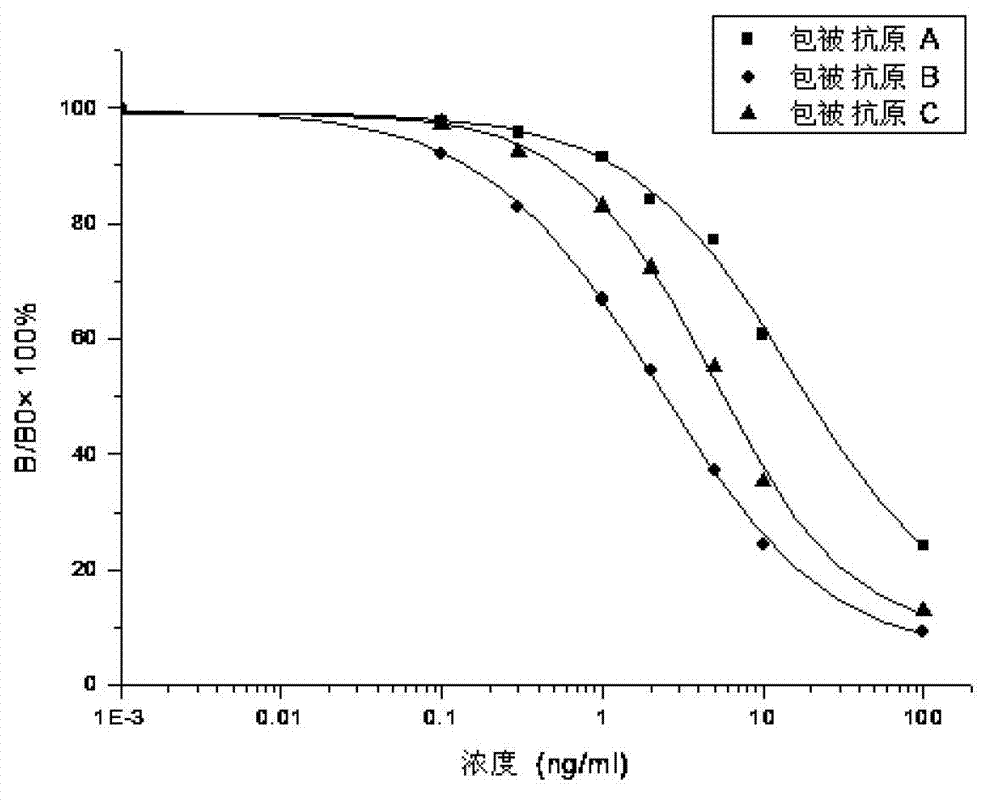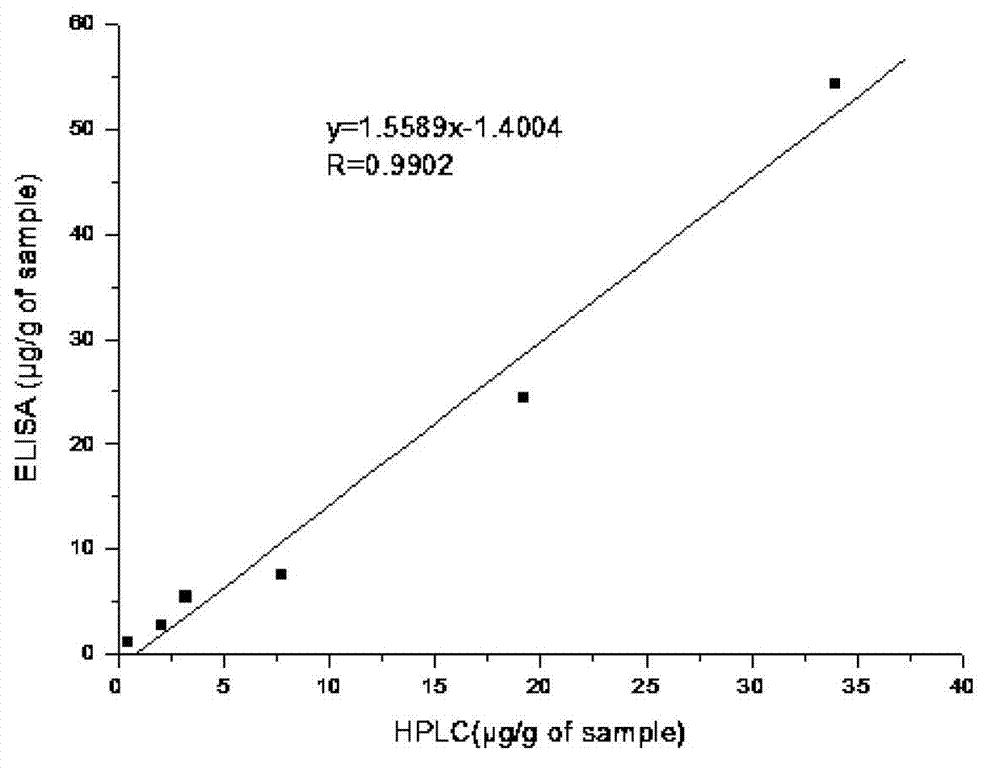Enzyme-linked immuno sorbent assay (ELISA) method for detecting melamine content in food
A technology of melamine content, which is applied in the research field of food safety supervision or food analysis, can solve the problem of insufficient detection sensitivity, and achieve the effect of simple sample processing, low test cost and large test volume
- Summary
- Abstract
- Description
- Claims
- Application Information
AI Technical Summary
Problems solved by technology
Method used
Image
Examples
Embodiment
[0075] 1. Preparation of melamine modification
[0076] Melamine is a small molecular compound without immunogenicity, and cannot directly immunize animals to produce antibodies. The molecular structure of melamine must be chemically modified reasonably and effectively so that it has active groups, so that it can be cross-linked with the carrier protein to obtain immunity Original and coated antigens. The present invention has prepared three kinds of melamine modifications, i.e. Hapten A, Hapten B and Hapten C:
[0077] 1) Synthesis of melamine hapten A (Hapten A)
[0078] Weigh 3~5mmol of 2-chloro-4,6-diamino-1,3,5-triazine (CAAT) into the reaction bottle, dissolve with anhydrous methanol, then add 5~10mmol of p-aminobenzoic acid to dissolve in 10~ 15mmol potassium hydroxide in anhydrous methanol. The reaction was refluxed for 5-12 hours until the CAAT reaction was complete. The reaction mixture was filtered and washed three times each with absolute ethanol and distilled ...
PUM
| Property | Measurement | Unit |
|---|---|---|
| Sensitivity | aaaaa | aaaaa |
Abstract
Description
Claims
Application Information
 Login to View More
Login to View More - R&D
- Intellectual Property
- Life Sciences
- Materials
- Tech Scout
- Unparalleled Data Quality
- Higher Quality Content
- 60% Fewer Hallucinations
Browse by: Latest US Patents, China's latest patents, Technical Efficacy Thesaurus, Application Domain, Technology Topic, Popular Technical Reports.
© 2025 PatSnap. All rights reserved.Legal|Privacy policy|Modern Slavery Act Transparency Statement|Sitemap|About US| Contact US: help@patsnap.com



